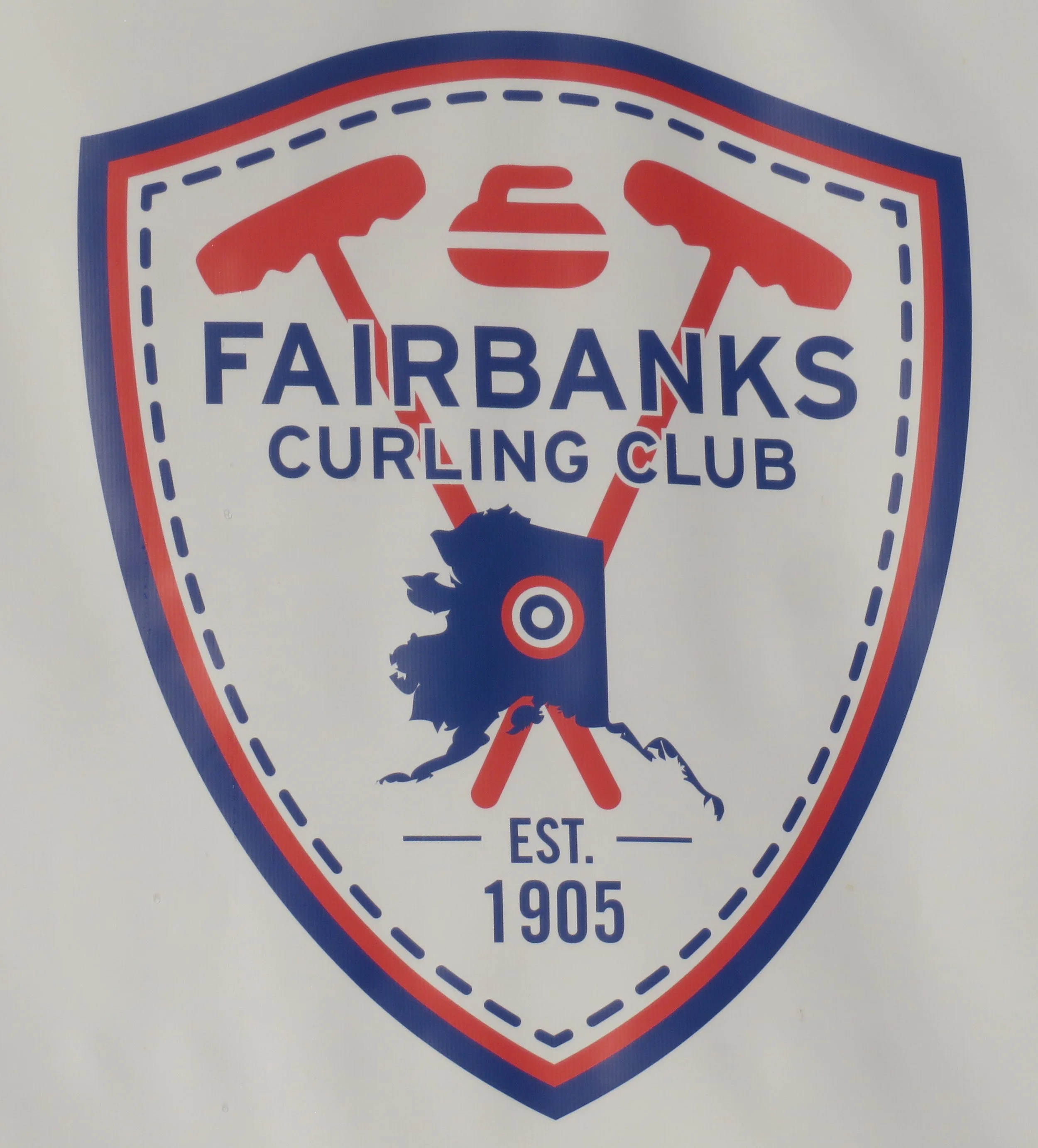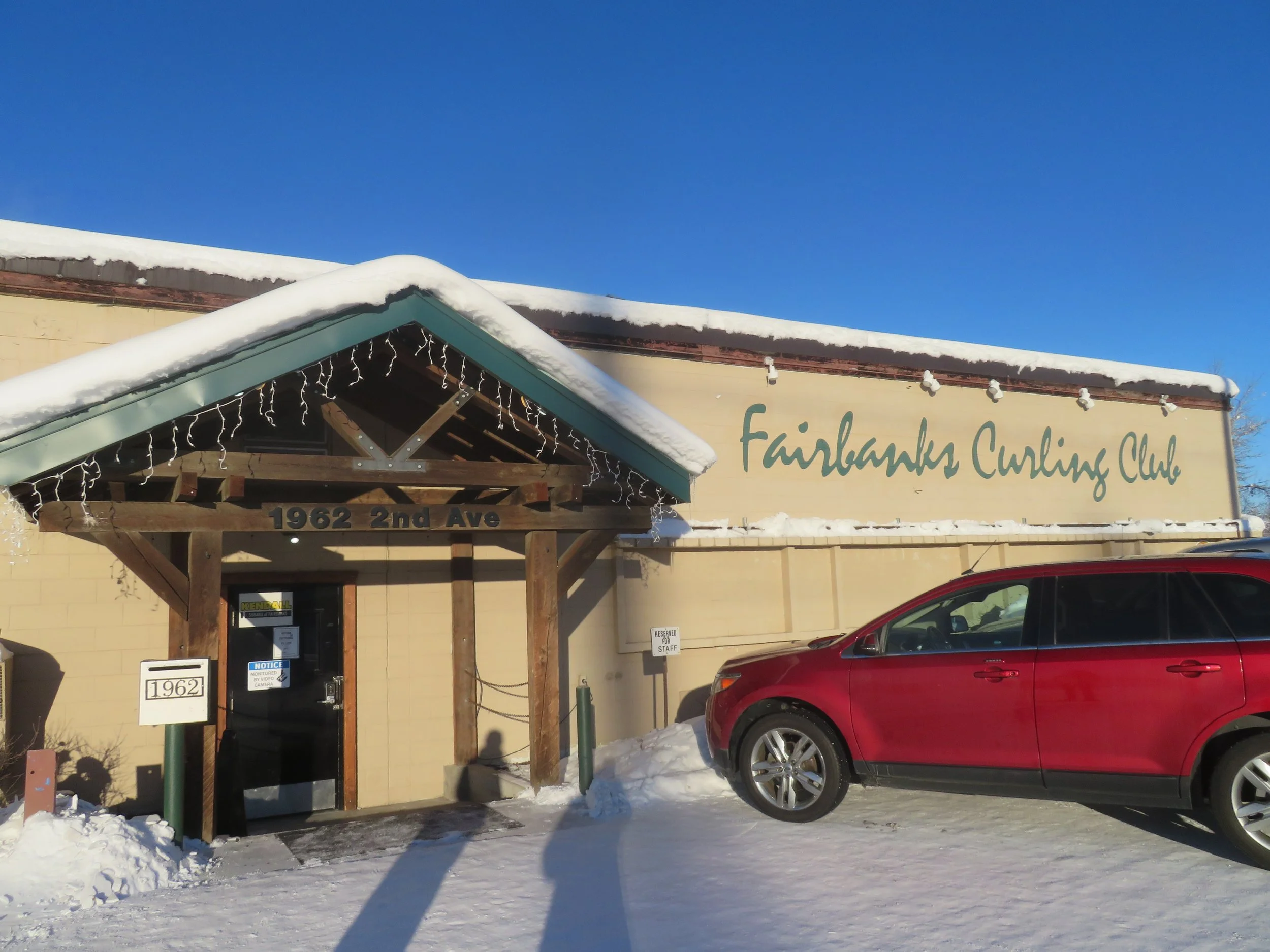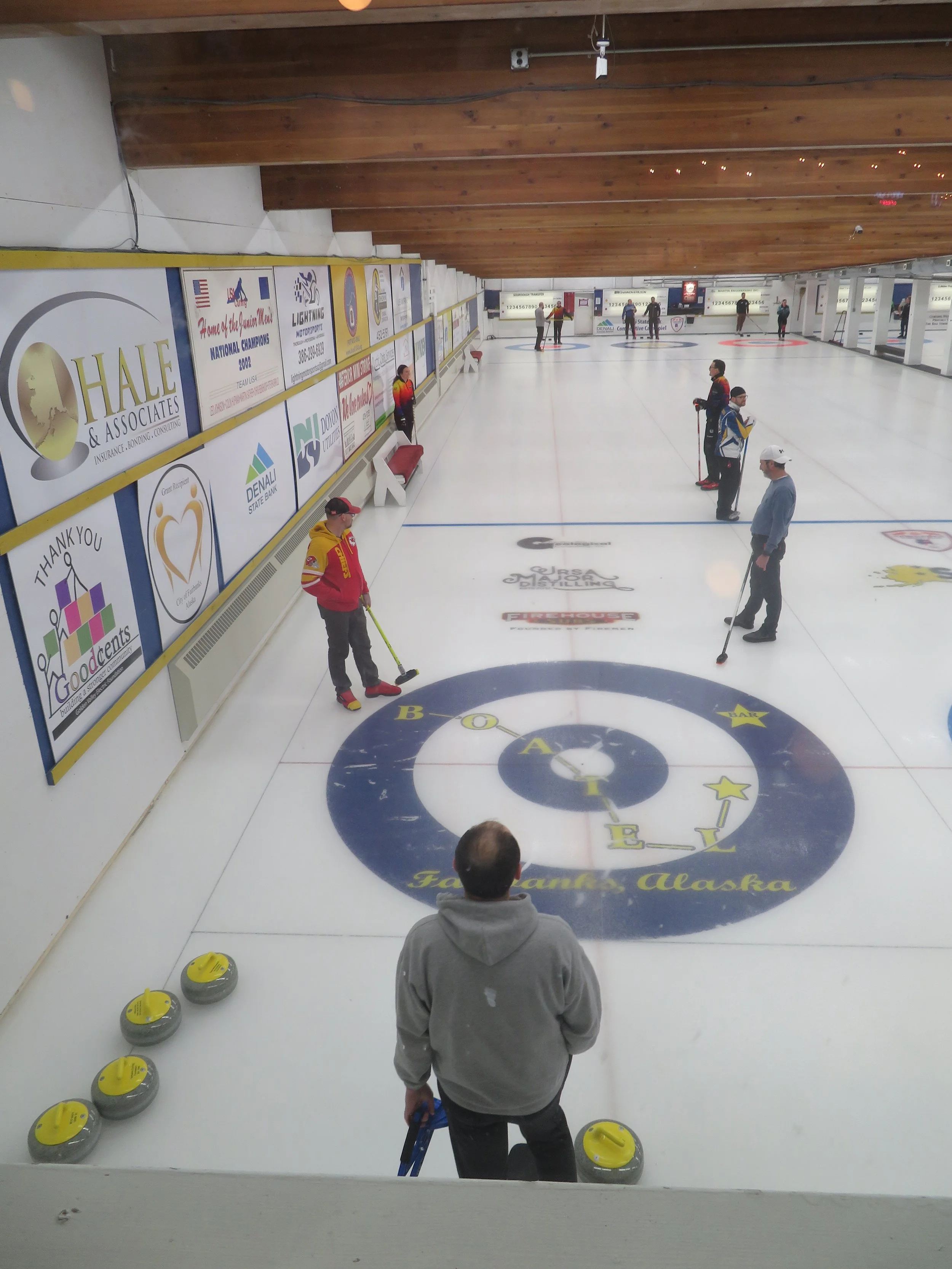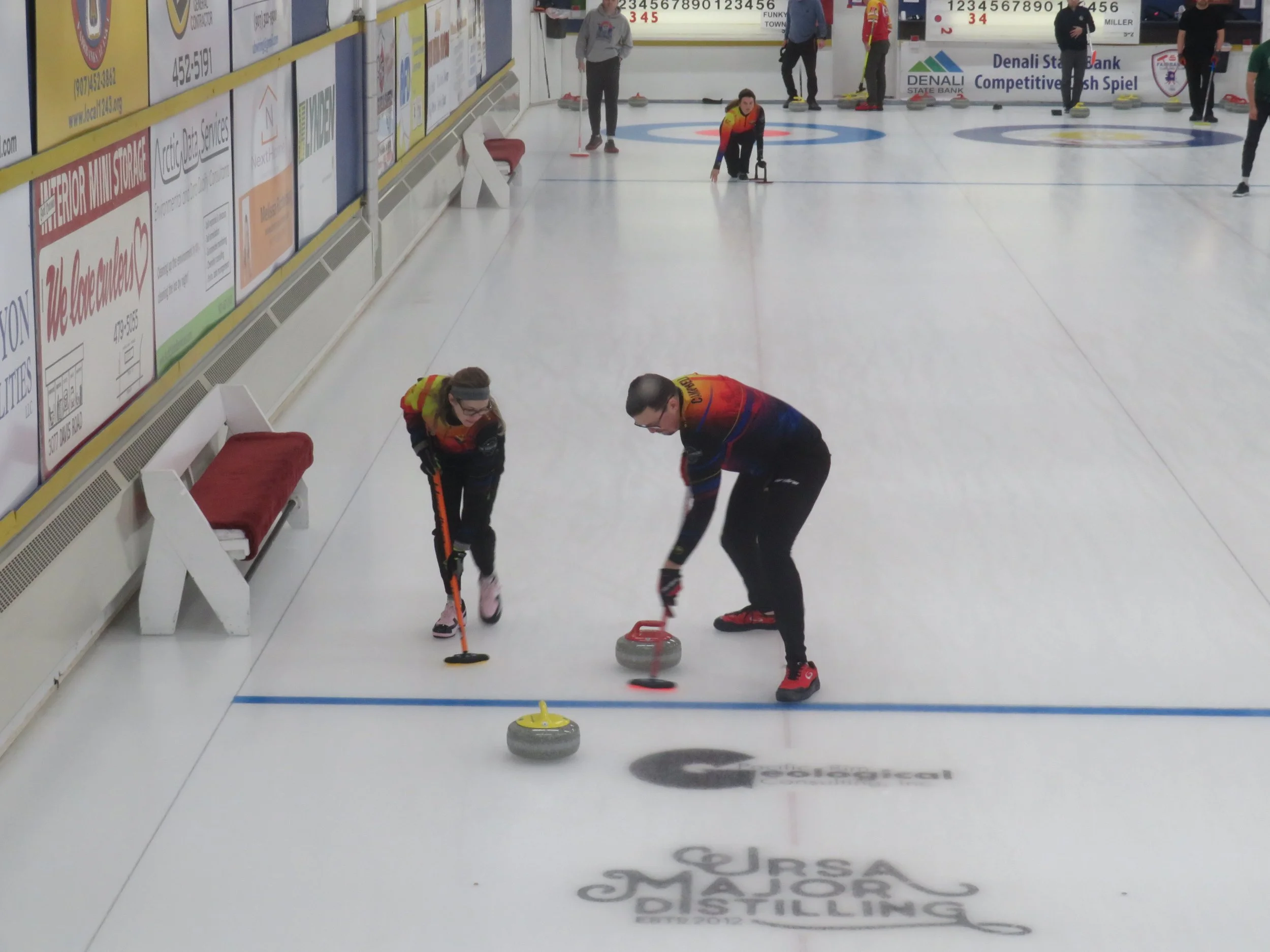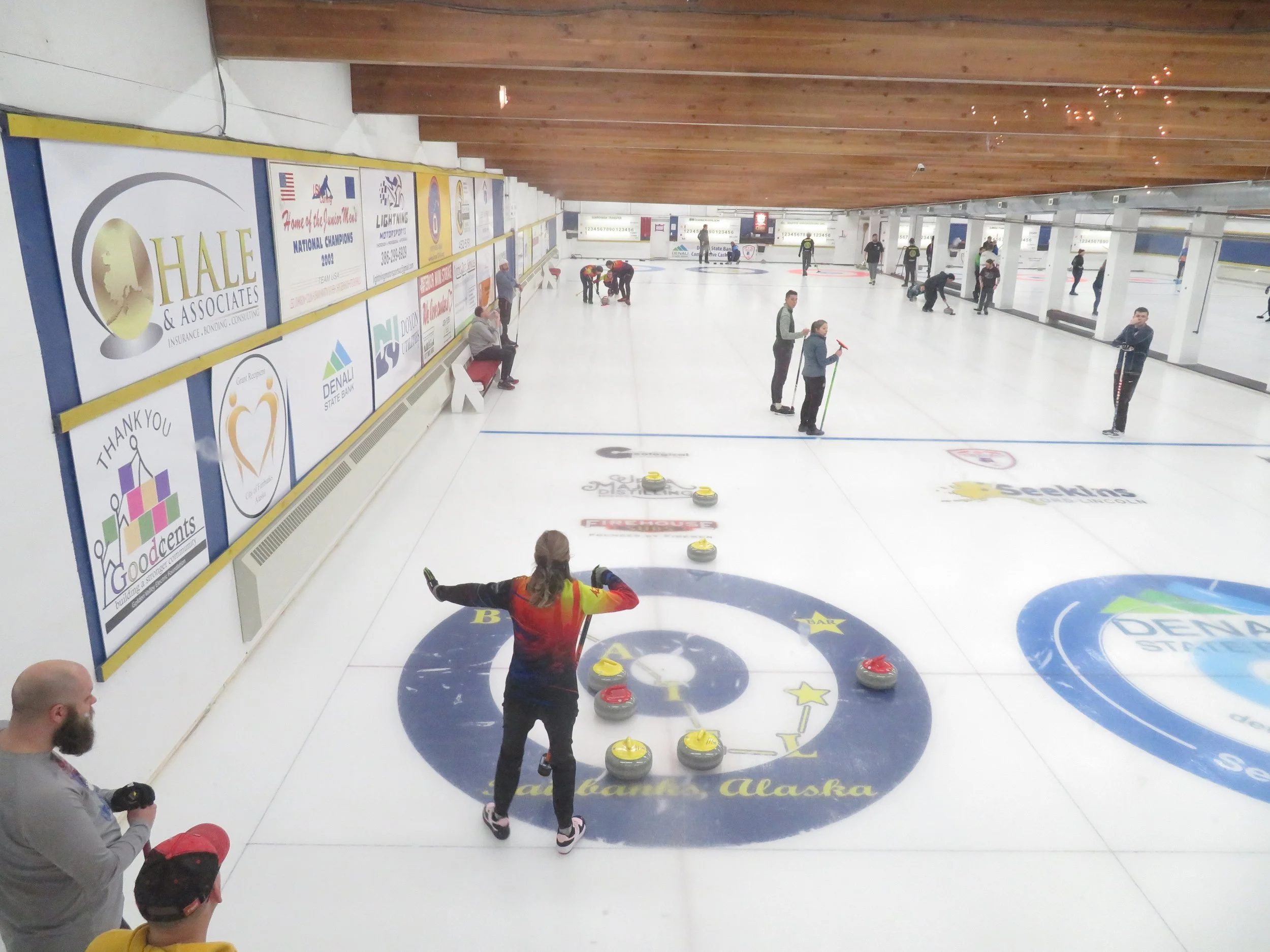Curling in Fairbanks - Rocks and Sheets
/“It’s okay if you think curling is boring. It’s kind of a smart people sport.”
Curling… and I don’t mean your tresses at the beauty salon… is a popular sport in Fairbanks… a sport with which we were not familiar. Some of our friends from Wisconsin (that’s you, Kari!) were avid curlers, but we’d never seen a game. In advance of our visit to Fairbanks, I contacted the Fairbanks Curling Club and asked if we could perhaps visit and learn more about the game. The response from the club’s manager, Kip, was quick and welcoming. Not only were we welcome to stop in, but there was a U5 ‘bonspiel’ scheduled during our visit. We weren’t quite sure what a bonspiel was, but it sounded great.
The oldest organized sports club in Alaska - The Fairbanks Curling Club
I did a little homework before our visit so we wouldn’t appear totally naive or stupid … though in retrospect, I doubt we succeeded. There’s a lot to learn about this esoteric sport starting with its very unique vocabulary. The iced playing area, for instance, is the “sheet”. The area of the sheet where points can be scored is the “house” which looks like a target, the center of which is called the “button”.
A Curling Sheet
Most important are the “stones” or “rocks” which are the playing pieces. Each of eight stones per team, is a 42-lb round chunk of a specific type of granite found on Ailsa Craig, an island off Scotland’s Ayrshire coast and where, incidentally, the sport of curling is said to have originated back in the early 16th century.
On a cold, clear afternoon we headed to the Fairbanks Curling Club, which by the way is the oldest organized sports club in Alaska, established in 1905. Kip met us and got us situated at a table in the warm viewing gallery overlooking the ‘sheets’ below. The temperature in the sheet area is maintained at a chilly 25°F (-3°C). Six sheets were in action simultaneously with television monitors displaying an overhead view of the ‘house’ of each sheet so we could see the action from our seats.
Above, Three games were going on simultaneously. There were another three sheets with three more games on the other side of the arena.
Basically, there are four players per team. Each of the teams’ players alternates taking turns ‘throwing’ two rocks down the sheet… a total of 8 per team. After throwing their stones, players ‘sweep’ for their next teammate. Sweeping can enhance the rock’s curl as well as make it go further. Lots of rules and regulations apply here, but the object is to get your rock inside the ‘house’ closer to the button than your opponent while keeping them from either getting closer or knocking your stone out of play. Only the team whose stone is closest to the ‘button’ can score points. It kind of reminded us of shuffleboard, but in a colder venue.
Throwing a stone requires lots of finesse and accuracy.
Sweeping is lively and energetic.
The skip (captain) indicates where he/she would like the rock to go. There are a lot of rocks in the house towards the end of the “end”. In the picture above, at this point, only the yellow rock near the button could score a point. Things change quickly, however. Another red rock could knock the yellow out of play and put a red rock in scoring position.
To complicate things, each round is called an ‘end’. There are 8-10 ends per game. There’s lots of yelling, encouragement, and frantic ‘sweeping’ occurring during each delivery. If it sounds confusing, it is. I won’t even get into how the scoring is done.I won’t even try to explain the intricacies of the game since I still don’t know them. I will, however, provide a link to a funny little curling video that Kip showed us to get us started.
Scoring is not intuitive.
We expected that the stone would be blasted down the ice like a hockey puck. It’s not, however, about strength and force, but rather about accuracy, skill, strategy, and finesse. Good players deliver the stone with a twist that causes the rock to ‘curl’, or curve, as it reaches the house. They can place the rock within an inch or less of their intended target. We watched as the players carefully placed ‘guards’ to protect rocks in play. Rocks, with the help of sweepers, passed with precision between other rocks to knock an opponent’s piece out of play or place their team’s rock in advantageous positions.
As we sipped a local Alaskan Amber draft, we were fortunate to have Kip, Larry, and Chaz, long-time players, take turns explaining the game, the strategy, and the scoring… and answering dozens of questions along the way. Did you know curling became an Olympic sport in 1998? We didn’t. We also didn’t realize that Las Vegas has a curling club!
This particular competition was a 5U event. All participants had less than 5 years of experience in the sport. We originally thought it was just local teams competing, so we were surprised to learn that teams from as far away as Arizona, Texas, and Alabama came to compete… unlikely venues for an ice sport, but nowadays, why not? The overall winners of this competition will progress to the Nationals held in April in Chaska, MN. Fairbanks won the game we were watching much to the delight of the local crowd. The overall honors went to a team from Hibbing, MN (incidentally childhood home of Bob Dylan!).
Thanks to Kip and the members of the Fairbanks Curling Club for their hospitality, patience, and curling education. I doubt we’d ever play ourselves, but we certainly enjoyed watching and would attend another game in a second. Maybe next time we’re in Fairbanks?


